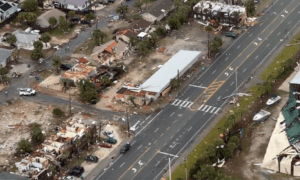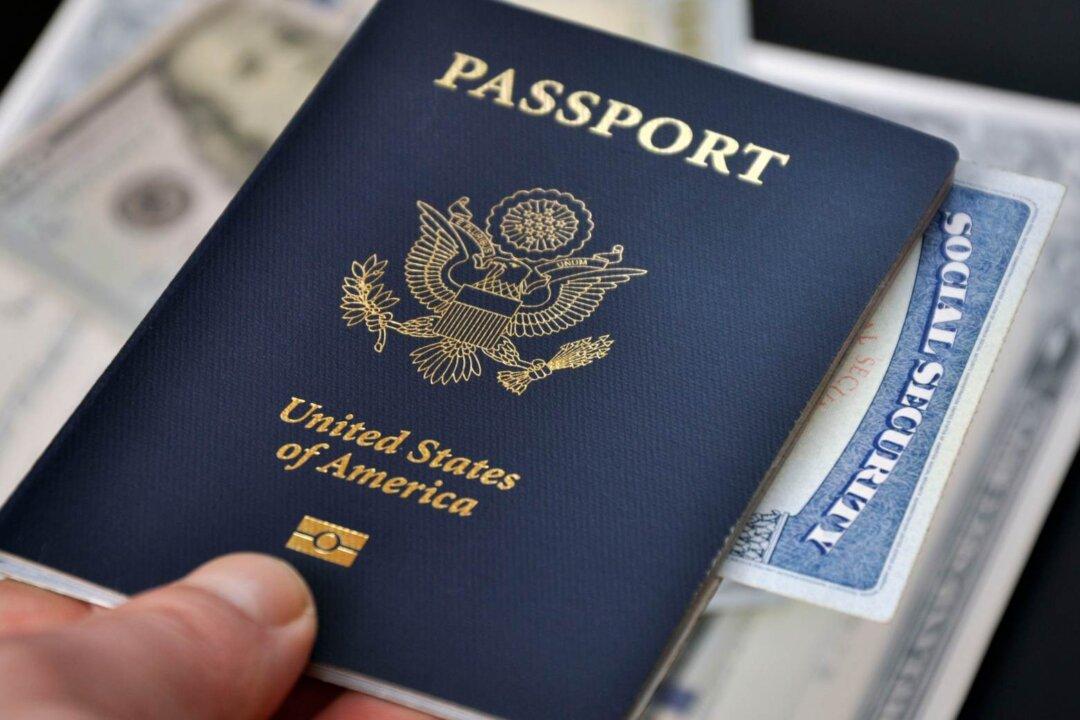BAYHEAD, Fla.—“I heard the freight train like everybody says, and I felt the house rocking,” homeowner Don Mayo told The Epoch Times outside his house. “This house didn’t do that with [Hurricane] Michael.”
The Vietnam War veteran and his neighbors were outside the morning after several tornadoes struck the Florida Panhandle in the early hours of Jan. 9. At that time, they were still without power.
“Around 4 a.m., we heard the hail,” his neighbor Julie Sanders told The Epoch Times. “There was loud hail. And so that woke me up, and then I went and looked. Of course, I couldn’t see anything outside. It was dark, it was windy. So I went back to bed.”
Shortly after that, she said they started getting alerts on their phone letting them know a tornado was near their area and to seek shelter now. The wind began to pick up shortly after that.
“We jumped out of bed, but by the time we got to a closet, it stopped,” she said. “But it seemed like the house was shaking. I was just closing my eyes, like, just get it over with ... It was loud. I’ve never been that scared.”
She and her husband considered themselves extremely lucky as they stood next to the giant oak tree that was uprooted from their front yard and fell without touching their home. She proved her point further by showing a second oak tree and a magnolia tree down along the side of the house.
Other homes in their community shared their fortunes, suffering only broken windows, battered garages or cars left in the driveway, and roofs missing tiles. But others—even some just across the street and next door—were not so lucky.
Cars, double-wide camper trailers, and a metal shipping container were found flipped over several feet from where their owners left them. Sheets of metal, suspected to be the tops of carports, were found hanging in trees with other sorts of debris.
Single and two-storied homes sat buckling under their own weight with holes and gashes torn in their roofs and sides with pieces of their skin, skeletons, and insides scattered as far as the eye could see.
This suburb appeared as a battlefield triage post. An ensemble of residents and their loved ones, volunteers, and professionals worked to remove debris from yards and stabilize wounded rooftops with blue tarps and plywood.
Homeowners waited anxiously for prognoses from somber, clipboard-holding experts on whether the structural damage could be repaired.
Fortunately, no one on that street was reportedly killed or injured.
“I think the freight train went right through our front yard,” Mr. Mayo said. His house was also left in an uninhabitable condition.

The twister that blew through Bayhead was one of several that dotted the central panhandle from Panama City Beach to Marianna, north of I-10.
The weather service gave that tornado a preliminary rating of EF-3, producing maximum wind gusts that reached 136 mph–165 mph.
A clear, sunny sky shone on older restaurants and apartment buildings ripped in half or turned to rubble, and giant holes were cut in the side of the marina’s boat storage building, known as a dry stack.
The streets were clearer than yesterday, but work was to be done, and one looting incident was stopped.
Recovery After Hurricane Michael
The Floridians who were hit by these tornados were still reeling from Hurricane Michael five years ago. Holes were torn in roofs that were only three years old. One home, in particular, Ms. Sanders pointed out on her street, had completely recovered from the storm only months ago and now stands unlivable.Board of County Commissioners Property Appraiser for Bay County, Matt Buchanan, gave a “ballpark” prognosis to The Epoch Times that out of the 30–40 homes he and his partner had inspected between 9 a.m. and 11:30 a.m. on Jan. 10, they deemed 10–15 of them “totaled.”
While Florida is known for hurricanes, tornados are a different animal. The destruction is intense but contained to the twister’s unpredictable path. Even those coming off of a hurricane, they said, showed some level of predictability as they were “gravitating” around the center.
The consensus among the affected who spoke with The Epoch Times was that while the damage was not as widespread as it was with a hurricane, it was at a level worse than what they experienced before.
These tornados were “sporadic” and reportedly avoided the Panama City area’s major population centers.
“There’s a view that the tornados around here seem to have a mind of their own, and they'll leave some houses just completely alone, but the house right next door will be completely demolished,” Mr. Buchanan said.
“We talked to a lady not too long ago that the entire house there was a solid—not brick but a solid foundation house—and she said she was in it and felt the house get lifted and then dropped, and you can tell from the foundation edges it was moved about a foot-and-a-half.
“The neighbor right next door to her had two or three shingles [missing]. That’s about it.”

Along with the physical damage comes emotional damage.
“There are people with PTSD from it,” Ms. Sanders said of Hurricane Michael. “The kids, especially because it was so scary for them.”
But with the fears came lessons learned and improved preparation and recovery efforts.
“I think we learned a lot,” said Sheriff Ford. “I’ve learned how resilient our community is. We’ve learned what the priority public safety services are after a storm, you know, that’s getting in and showing a lot of presence in deterring looting, making people feel safe.”
He has served as the chairman of Florida’s Sheriffs Task Force for the past two years and praised the efforts of the governor, Ron DeSantis, Chief Financial Officer and Fire Marshall, Jimmy Patronis, and director of Florida’s Division of Emergency Management, Kevin Guthrie.
He also said that power was supposed to be restored to the beach area on Jan. 10.
“We’ve learned a lot about working together,” he said. “Local and state resources coming together when communities are affected like this.”

“I mean, I think all of us that went through Hurricane Michael have had coping issues with that. But we also developed a lot of resilience. Through that, I think that that helps us in these types of situations,” he said, specifically mentioning the forest fires they recently dealt with.
“We just work so well together with the different police departments and sheriff’s office, emergency management, fire, EMS.
“We just go into kind of automatic mode. Everybody knows what to do. Everybody’s helping one another. Everybody has their different roles, their swim lanes.
“Really, it’s kind of brought us together as a community, even in the emergency management and law enforcement communities.”
Damage surveys and recovery efforts are still underway.
Hurricane Season will officially begin on June 1, and Sheriff Ford is confident his community will be ready to face it because, he said, they know firsthand that the worst possible outcome can happen.







